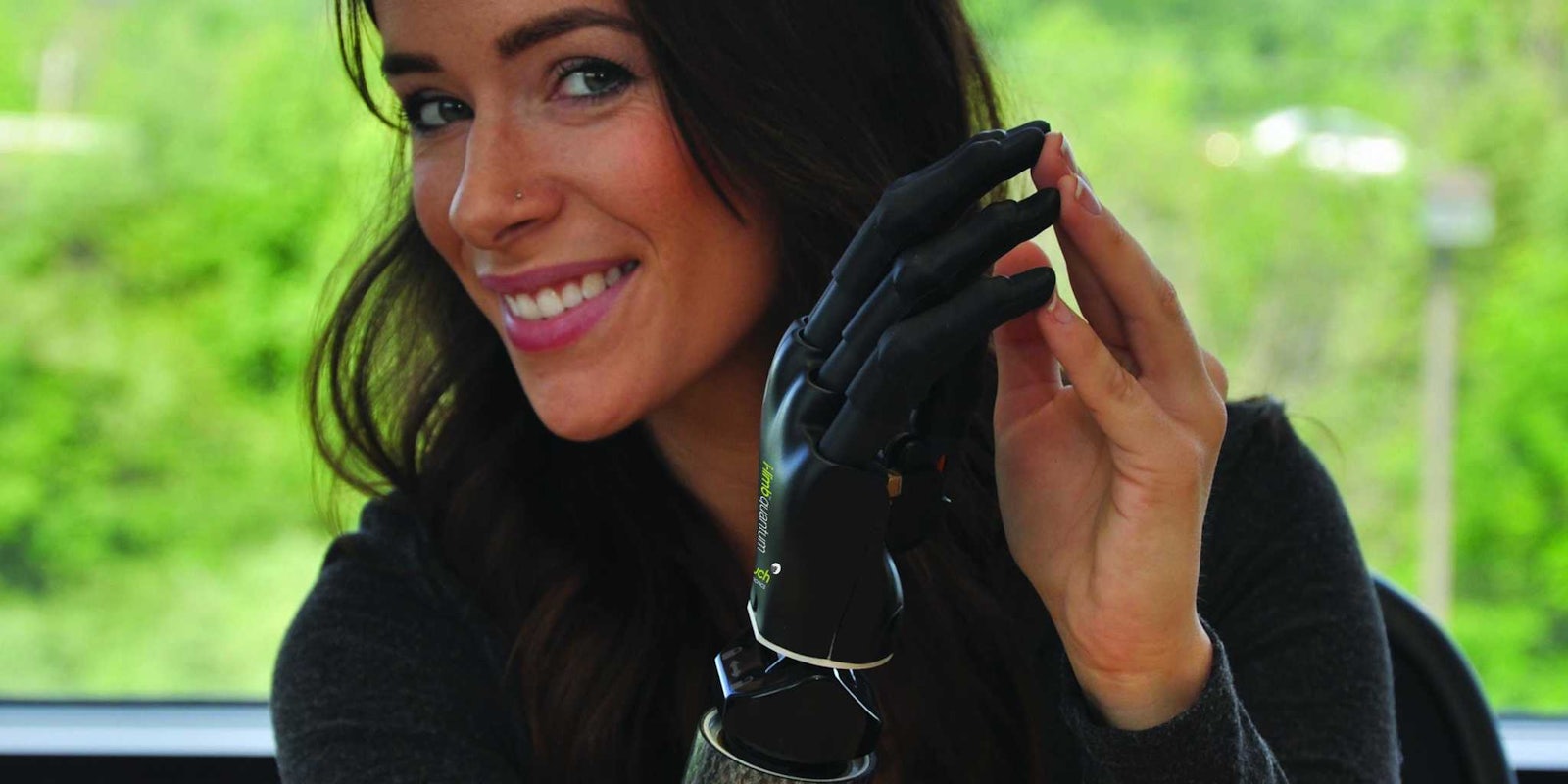We are closer than ever to a Star Wars–style bionic hand.
Scientists at Sandia National Laboratories, a research group owned by Lockheed Martin, made sweeping progress this week in developing artificial nerves that might effectively wire robotic prosthetic devices directly to the human brain by tapping into a patient’s nervous system. In other words, the robotic limbs of the future might engage in conversation with the user’s brain directly.
Robotic prosthetics are an indispensable application for those with lost limbs who want to retain some normalcy in their lives. The technology is made more compelling when such electronic body parts are controlled by thought, bursts of electrical activity to be electronically recognized and translated into movement automatically. It closes the loop between man and machine in a meaningful way.
This is more or less what’s already happening with today’s state-of-the-art prosthetics, though at a lower resolution. Rather than process brain signals directly, today’s assistive robotics employ surgical implants or skin-level sensors to detect muscle movements and other bodily electrical activity, which it then renders into movement. The user’s brain is still only talking to the body, but the prosthetic is listening in such a way that it can understand and take orders.
Future devices may not require such concessions, instead listening directly for any commands from the brain itself.
Robotic prosthetics are far from biological-looking, but their positive impact is undeniable. “It’s something of Biblical proportions,” Ossur CEO Jon Sigurdsson told Bloomberg. “You can take people [who] don’t have a leg to stand on and change that in almost a heartbeat.”
Based in Reykjavik, Iceland, Ossur is a leading manufacturer of robotic prosthetic lower limbs. The company boasts $500 million of revenue per year, selling robotic legs, feet, and knees to people around the world, though most of its customers are in the West.
Here’s a video demo of the company’s Power Knee, a battery-powered robotic knee that makes use of artificial intelligence to learn the wearer’s natural gait, optimizing its movements for more efficient walking.
While Ossur rules the world of lower body prosthetics, Touch Bionics is leading the way in robotic hands. It’s a smaller company working with a variety of digit- or hand-loss patients to develop full or partial robotic solutions for them.
“[The really exciting stuff] right now is relegated to clinical research; it’s not available on the market,” Karen Hakenson, director of marketing for Touch Bionics, told the Daily Dot. “I’m not involved in the research, but I do know some of the limitations involve surgery. You have to get your nerves reconfigured to talk with a bionic prosthesis. There’s a lot of exciting work being done in that area.”
https://www.youtube.com/watch?v=r_YGtpvvoU0
The interface between robotic prosthetic and wearer is showing signs of disappearing. Robotic manipulations by a human mind may soon require no more than a human thought, the situation presenting itself as though one was never missing an arm in the first place.
H/T Bloomberg | Photo via Touch Bionics


